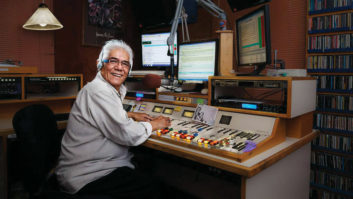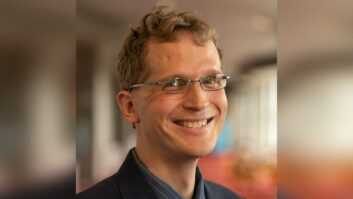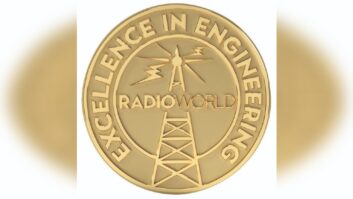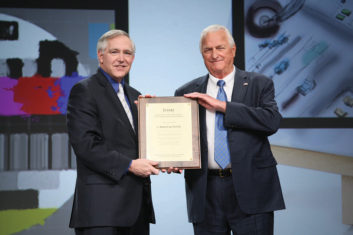
SARASOTA, Fla. — When it came time to design an AM directional array, L. Robert du Treil Sr. acknowledges, he could get very creative, if it would suit the needs of a client.
“I’d bend the rules but not break them. Though the FCC may disagree with that,” du Treil said with a chuckle.
“I suspect it did get me in trouble a few times. I just tried to take advantage of what was available to me.”
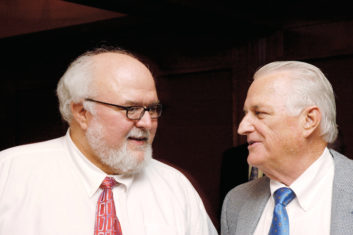
business partners at du Treil, Lundin & Rackley.
Colleagues believe there are stations operating today that could not have been built without his “outside the box” thinking, according to the nomination form submitted by Ron Rackley, his business partner of 25 years.
They say du Treil’s strength was in visualizing designs for AM directional arrays and then making innovative proposals to the FCC in cases that had no clear-cut precedents.
Du Treil, 78, former president and co-owner of du Treil, Lundin & Rackley Inc., is considered by some to be an elder statesman of broadcast engineering. His contributions to the field over a 50-year career have earned him the 2011 NAB Radio Engineering Achievement Award.
The award was established in 1959 and is given to individuals for significant contributions that have advanced the field of broadcast engineering. Du Treil will be honored at the Technology Luncheon on Wednesday April 13 in the Las Vegas Hilton during the NAB Show.
His experience involves all aspects of AM, FM and TV allocations, FCC applications and various field work. In addition to consulting, du Treil spent much of his career researching and writing on a number of topics affecting broadcasters. He traveled extensively to make presentations to many local, state and national broadcast engineering groups.
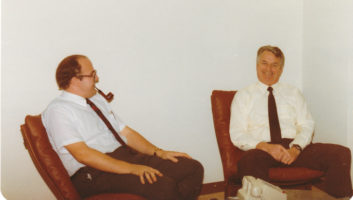
In 1980 he authored instructional documents that served as the basis for discussions regarding AM directional antenna technology during the ITU Region 2 Conference, which revised radio station allocation engineering standards and procedures, according to NAB.
“The ITU wanted a new agreement to cover the whole hemisphere, instead of just North America, with provisions that, among other things, would provide for a station database to use for computer studies,” said Rackley. “Bob contributed the training material for specifying AM directional antennas using standard patterns, which had earlier been adopted for doing allocation studies domestically.”
The Region 2 agreement replaced the old North American Regional Broadcasting Agreement, or NARBA, which had roots going back to 1940 and was considered obsolete, according to Rackley.
‘Giving Back’
“Bob always stressed to us the importance of giving back to the industry,” said Rackley. “That’s one reason why our firm always had the policy of supporting efforts of the National Association of Broadcasters and other industry groups to further the interests of our clients, pro bono if it was possible to do so.”
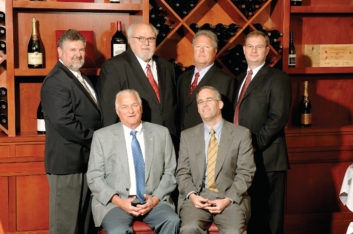
The firm of du Treil, Lundin & Rackley has designed some of the largest and most complicated AM antenna systems in the country, according to its website.
An example is WWRU(AM), an expanded-band station at 1660 kHz first licensed to Elizabeth, N.J., and then to Jersey City. In 2000, du Treil convinced the FCC to permit WWRU to upgrade from a non-directional station with daytime power of 10 kW and nighttime power of 1 kW to much more competitive directional pattern.
“We convinced the FCC to allow [WWRU] to operate at 10 kW at night, using the directional antenna, which then gave them fairly good coverage to New York City,” du Treil said.
Another career highlight for du Treil was his firm’s relationship with Hatfield & Dawson Consulting Engineers LLC. The firms created a joint venture to pursue high-power medium-wave antenna system and allocation engineering projects, most in excess of 50 kW, for the International Broadcasting Bureau.
“The joint venture was primarily for doing foreign broadcast station work. It was definitely beneficial for both firms,” du Treil said.
Du Treil retired from the company in 2007 but remains a consultant for the group.
Rackley, himself a recipient of the NAB Radio Engineering Achievement Award in 2006, contends that du Treil seemingly was predestined to excel in a radio engineering career, having been born into a family with close ties to broadcast engineering.
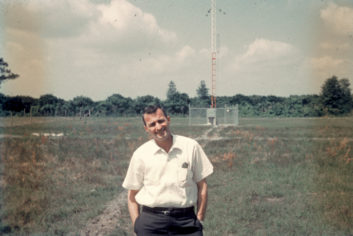
Bob du Treil’s father, L.J.N. du Treil, worked at American Marconi as a telegraph engineer. L.J.N. du Treil eventually worked for the Federal Radio Commission, the predecessor to the FCC, as engineer in charge of its New Orleans office. He also began his own broadcast engineering consulting firm and is credited with the original construction of radio station WWL(AM) in New Orleans, du Treil said.
“My family has worked in technical fields for four generations, including my grandfather, who worked on steam engines. There was never much doubt I would continue in the field. I never dreamed of doing anything else,” du Treil said.
He described his father, who died in 1985 at age 94, as a true gentleman who greatly enjoyed experimenting with electrical things, like storage batteries and tubes. The only time he heard his father cuss was when L.J.N du Treil got too close to high voltage in his amateur radio transmitter and his body became a conduit for the electricity.
Opened His Own Shop
Bob du Treil received a BSEE from Louisiana State University in 1961 and joined the firm of John H. Mullaney & Associates in Washington.
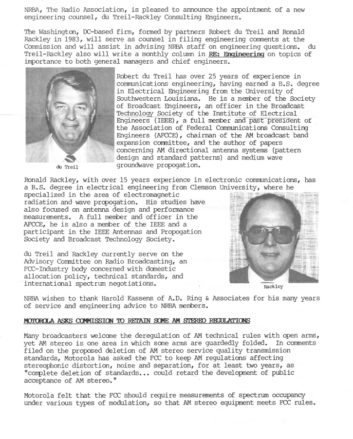
“John Mullaney was a real inspiration to me and a real free thinker. He was willing to try things that no one else would and I was really inspired by that,” du Treil said.
In 1967 du Treil joined his father’s consulting firm in New Orleans, but returned to Washington in 1970 and soon joined Jules Cohen & Associates. He became partner in 1977.
“Jules was just a wonderful fellow who was very smart and created a good learning environment. I was fortunate to work at three tremendous firms.”
Bob then founded his own consulting firm in 1983 and convinced Rackley, whom he had met at Jules Cohen & Associates, to join him. Du Treil-Rackley Consulting Engineers was born.
“Ron and I were good buddies and we were a good match in business together. I ran the business side and (Ron) became the top guy when it comes to AM directional design, and that was what we really became known for, even though we did FM and TV work, too.”
The pair combined their company with A.D. Ring and Associates, led by John Lundin, in 1987. Thus du Treil, Lundin & Rackley was formed. Rackley and Lundin remain partners in the firm along with du Treil’s son, Bob Jr.
The firm moved its offices from Washington to Sarasota, Fla., in 1992. “Early on we had to be near the FCC to get a look at the records, but then everything we needed to do our job became available on the Internet. Plus, Washington was really beginning to wear on us. I got tired of riding on the subway. Actually, I think the FCC treated us better after we moved to Sarasota,” du Treil said.
Colleagues said du Treil excelled at project management and client relations and that AM broadcasting always remained his passion.
“I obviously enjoyed working with AM more than anything else. I enjoyed being in the field and getting those towers to do what they were supposed to do to make a directional pattern. It was very fulfilling to design a directional pattern in the office and then go out and actually make it work.”
The transition to using computers for designing AM directional facilities was especially satisfying.
“Initially, when we designed a directional AM facility with three towers, it would take us three or four days using a mechanical calculator for calculations and drawing plans. It was just very time consuming. Now you can do the work in about three hours.”
Many of the same AM radio broadcasters that du Treil helped with projects though the years now face challenges never seen before, according to the engineering consultant.
“Radio just doesn’t have the punch it used to. However, all of radio is facing a challenge, not just AM. Someone very smart is going to have to come up with some very good ideas. But I’m still hopeful for the future. Many have given up on terrestrial radio, but I haven’t,” du Treil said.
Du Treil and his wife Barbara spend leisure time on their Silverton 34-foot convertible boat cruising waters near Sarasota, Fla. The couple has been married 49 years; they have three children and seven grandchildren.
Honor Roll
Winners of the NAB Engineering Achievement Award are listed. Beginning in 1991, radio and TV winners were named; radio winners are shown.
1959 John T. Wilner
1960 T.A.M. Craven
1961 Raymond F. Guy
1962 Ralph N. Harmon
1963 Dr. George R. Town
1964 John H. DeWitt Jr
1965 Edward W. Allen Jr.
1966 Carl J. Meyers
1967 Robert M. Morris
1968 Howard A. Chinn
1969 Jarrett L. Hathaway
1970 Philip Whitney
1971 Benjamin Wolfe
1972 John M. Sherman
1973 A. James Ebel.
1974 Joseph B. Epperson
1975 John D. Silva
1976 Dr. Frank G. Kear
1977 Daniel H. Smith
1978 John A. Moseley
1979 Robert W. Flanders
1980 James D. Parker
1981 Wallace E. Johnson
1982 Julius Barnathan
1983 Joseph Flaherty
1984 Otis S. Freeman
1985 Carl E. Smith
1986 Dr. George Brown
1987 Renville H. McMann
1988 Jules Cohen
1989 William Connolly
1990 Hilmer Swanson
1991 George Marti
1992 Edward Edison & Robert L. Hammett
1993 Robert M. Silliman
1994 Charles T. Morgan
1995 Robert Orban
1996 Ogden Prestholdt
1997 George Jacobs
1998 John Battison
1999 Geoffrey Mendenhall
2000 Michael Dorrough
2001 Arno Meyer
2002 Paul Schafer
2003 John W. Reiser
2004 E. Glynn Walden
2005 Milford Smith
2006 Benjamin Dawson & Ronald Rackley
2007 Louis A. King
2008 Thomas B. Silliman
2009 Jack Sellmeyer
2010 Steve Church
2011 L. Robert du Treil Sr.





